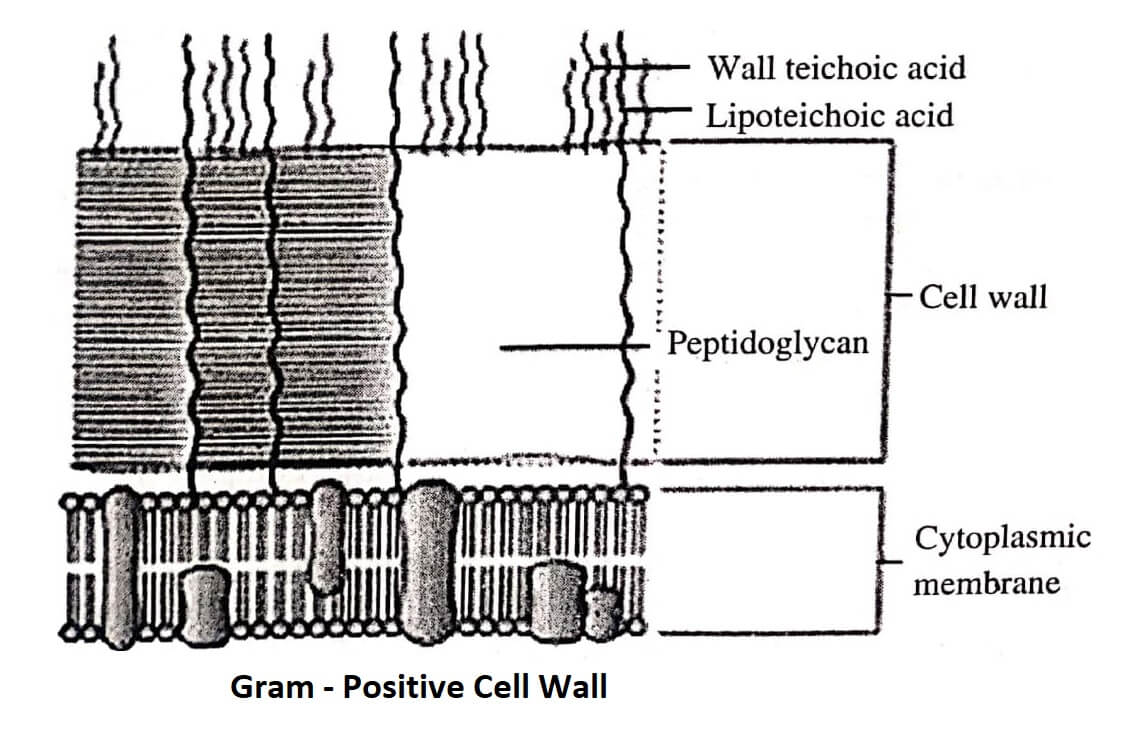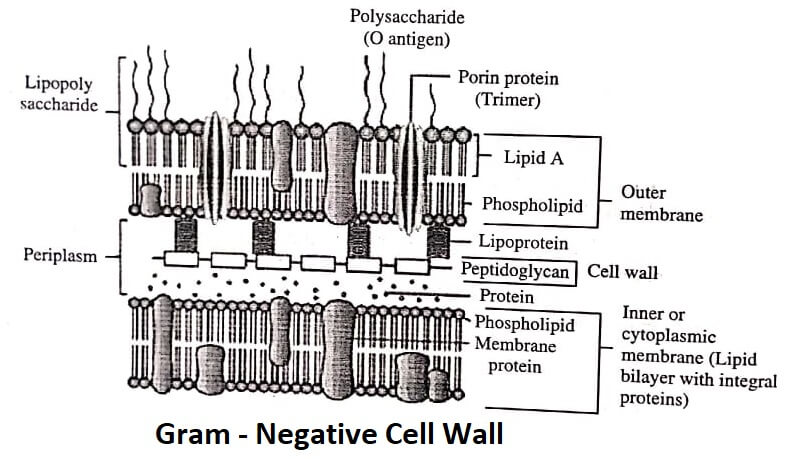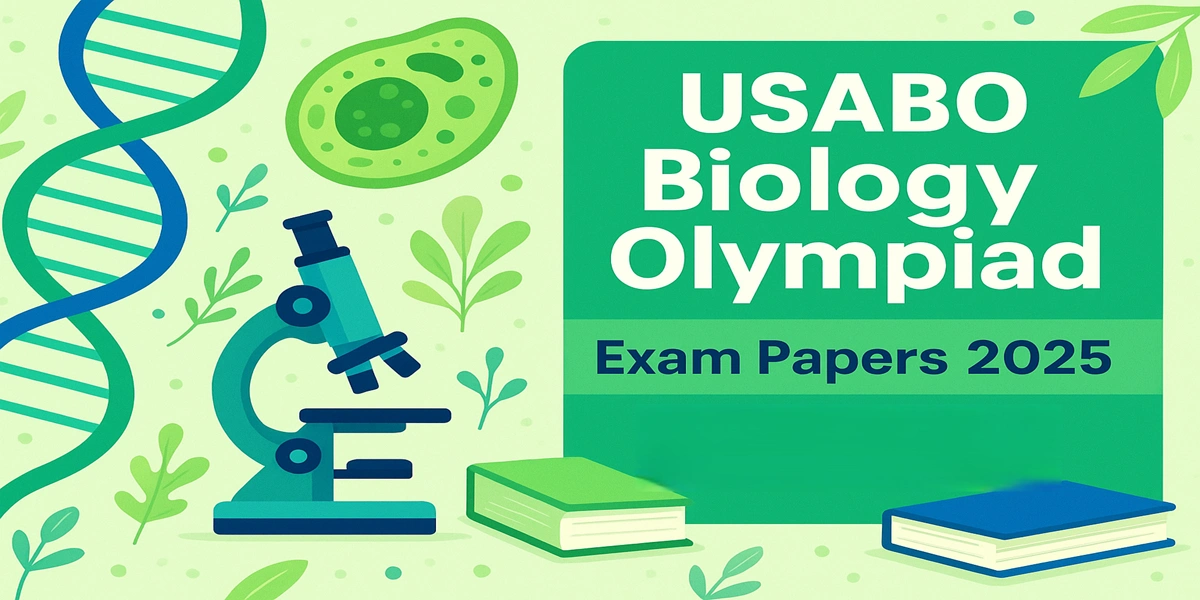Gram-Positive Bacterial Cell Wall
Cell wall of gram-positive bacteria (figure), is approximately 80nm thick having several layers of peptidoglycan.
Peptidoglycan : It contributes to 50−90% of the dry weight of the cell wall. It is thicker, stronger, and extensively cross-linked than gram-negative bacteria, in which peptidoglycan comprises of 5−10% of the wall material. Peptidoglycan layer is thin in gram-negative cell walls.
Teichoic Acids : Cell wall of gram-positive bacteria has teichoic acids containing alcohol (either glycerol or ribitol) and phosphate. There are two types of teichoic acids; first is wall teichoic acid which is covalently bonded to peptidoglycan, and the second one is membrane teichoic acid (lipoteichoic acid) that covalently links to membrane glycolipid and is concentrated in mesosomes.
Wall teichoic acids are absent in some gram-positive species, whereas membrane teichoic acids are present in all.

Gram-Negative Bacterial Cell Wall
Structurally, the gram-negative cell wall (figure) is different from gram-positive cell wall.
Peptidoglycan Layer : It constitutes approximately 5-10% of the dry weight of the wall of gram-negative bacteria and consists of a single unit. In the outer membrane and plasma membrane, it is linked with lipoproteins. It is present in periplasmic space (a gel like fluid between the outer membrane and plasma membrane) containing high concentration of degradative enzymes and transport proteins. The periplasmic space is around 20−40% of the cell volume.
Lipoprotein : Lipoprotein/murein lipoproteins are linked (both covalently and noncovalently) to the peptidoglycan through protein portion and to the outer membrane through lipid. It functions to stabilise the outer membrane and hold it to the peptidoglycan layer.

Outer Membrane : It is present externally to the peptidoglycan and is attached with – lipoproteins. It is a bilayered structure having inner leaflet composed of phospholipid, while outer leaflet composed of lipopolysaccharide (LPS) molecules.
Functions
Protective Barrier : It provides protection by blocking or slowing the entry of salts, antibiotics, and other toxic substances which may kill or injure the bacterium.
Porins or Trans-Membrane Proteins : Along with LPS, outer membrane has many proteins that selectively transport nutrients into the cell. Porins or transmembrane proteins travel across the outer membrane, making trimeric channels that allow passing of small molecules (e.g., nucleotides, disaccharides, peptides, amino acids, vitamin B12, and iron).
Lipopolysaccharide (LPS) : It is a unique structural component present in the outer membrane of the gram-negative bacteria.
It is a large complex molecule of lipids and carbohydrates and has three components:
Lipid A : It is the lipid part of LPS embedded in the top layer of outer membrane. Upon death of gram-negative bacteria, lipid A is released as an endotoxin, which is responsible for the endotoxic activities, i.e., pyrogenicity, lethal effect, tissue necrosis, anti-complementary activity, B-cell mitogenicity, immunoadjuvant property, and antitumor activity.
Core Polysaccharide : It is linked to lipid A and a terminal series of repeated units having unusual sugars that maintains stability. O-Polysaccharide: It is composed of sugar molecules. It extends toward outside with respect to the core polysaccharide.
O-polysaccharides work as antigens and are differentiating factor for species of gram-negative bacteria. In gram-positive cells, its role is similar to that of teichoic acid.
A major surface antigen on polysaccharide of the bacterial cell is O antigen. Bacteria lacking the O antigen form rough colonies, while bacteria with LPS having O antigen forms smooth colonies in bacteriological media.
| Read More Topics |
| Ultrastructure of bacteria cell |
| The prime features of a prokaryotic cell |
| Drugs used in parkinson’s disease |
| Steps in neurohumoral transmission |





